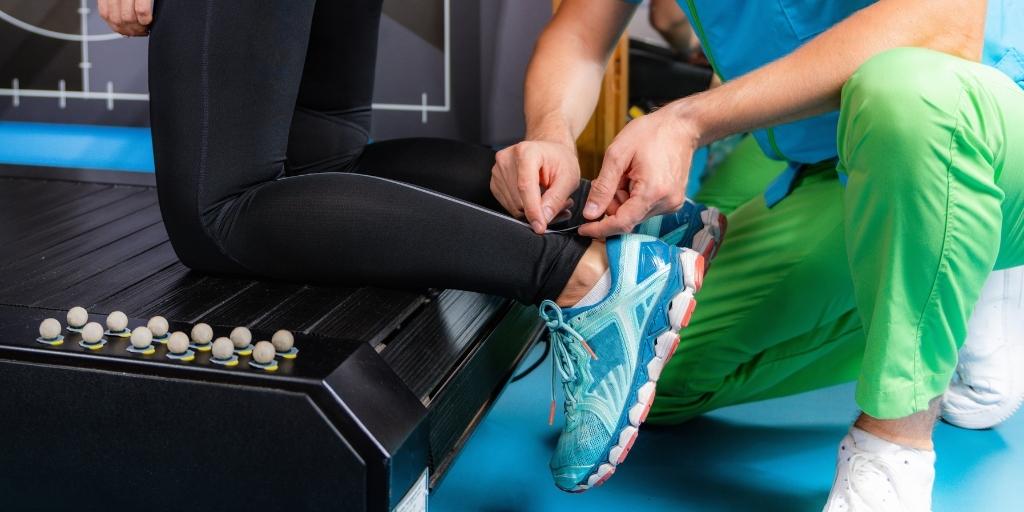- +1.888.528.8757
- office@doctorspreferredhhc.com
- Monday – Friday 9 AM – 5 PM
Generally aging causes a lot of different changes in the human body and especially in a gait. A lot of gait disorders occur whenever a person gets older and it becomes more and more difficult to control them. First of all, you can see how the steps of the elderly slow down, the symmetry and the synchronicity of movements change, and even regular walking becomes a big deal for them. It may even cause psychological problems as they feel like they are no longer independent and need assistance to perform their daily activities. People also feel like the death is close and may fall into depression.

As a matter of fact, elderly people start to take a step even more carefully, try to get support handrails when going downstairs. Natural gait changes progress slowly and do not disrupt daily activities for a long time. Diseases from the central nervous system lead to rapid movement disorders both from the lower and upper extremities, accompanied by changes in the cognitive sphere.
First of all, the step shortens. An elderly man moves slowly carefully looking at his feet and controls every step. It becomes difficult to combine movements and communication. Whenever walking or moving they start to use simple sentences or phrases.
Little by little, it becomes difficult for them to do the first step when they want to stand up. With the progression of the disease, the gait acquires a shuffling character, the balance is disturbed, dizziness appears. In the last stages of the disease, the ability to walk is slowly lost. The patient is in a position of cerebral paraplegia with flexion contracture.
Each type of disorder is not specific and occurs mainly along with other diseases. As a rule, it can indicate several pathologies of either the nervous system or the musculoskeletal system at once. Hence, gait disorder cannot be the main diagnostic criterion, it must be supplemented with other signs of pathology.
Such manifestations occur during such diseases as Sarcopenia, Parkinson’s disease (frontal lobe and subtropical brain lesions). Observing the symptoms including the falls and muscle strength reduction, doctors may diagnose nearly everything from brain damage to Sarcopenia. To reveal the main cause of the symptoms doctors may require thorough research.
Whenever speaking about gait disorder, the first thing that comes to our mind is sarcopenia. The generic symptoms are the loss of “strength” in muscles, being not able to walk properly, etc. It may even feel like their muscles are no longer able to withstand the load that was their general normal.
To be short, the most common causes of sarcopenia are age-related changes in the hormonal background. And moreover, chronic heart problems, lung diseases, diabetes, inactivity all these factors just worsen the situation with sarcopenia.
In the elderly, sarcopenia is associated with gastrointestinal disorders and absorption processes, as a result of which the substances required for adequate muscle functioning are simply not absorbed in the appropriate amount. Another cause of sarcopenia in people over 60 is a lack of meat consumption, which is accompanied by a decrease in the synthesis of myosin, one of the main components of contractile muscle fibers.
Another cause of sarcopenia is the decrease of daily activity in muscles and the ability to regenerate as a result of insufficient physical exertion on the muscles.
In fact, muscle weakness in the elderly is inevitable. However, with proper nutrition and sufficient physical activity, this process can be, if not stopped, then at least slowed down and cause fewer difficulties.
Sarcopenia, produced by age-related changes in muscle tissue, contributes significantly to an increase in the risk of falling, as well as a reduction in functional capacities and the capacity to care for oneself. As the population’s life expectancy rises, medicine faces new obstacles in keeping the elderly active and independent. Treatments for osteoporosis, atherosclerosis, and oncological illnesses are being developed, and sarcopenia is receiving increased attention. Among the known medicinal therapy options, testosterone and vitamin D preparations have shown efficacy.
Whenever you feel like something is wrong with you, don’t hesitate to consult a doctor and find the main cause. The best you can do is to reduce the risk of sarcopenia by consulting a doctor on time.